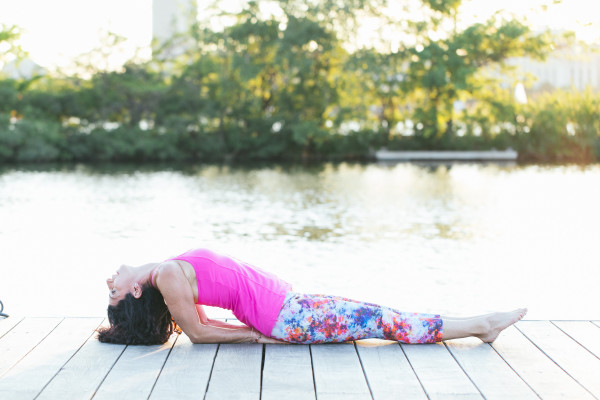
I used to teach in a way that led with the head. I tried to teach by stuffing a lot of platitudes, thoughts, inspirational ideas and even coaching into each class. I had a sense that yoga was supposed to be a mover; a mover of stuck energy into flow. I thought that yoga was primarily the tool to help us shift from unhealthy patterns to better ones and the best way to do that would be to coach people through that process.
The funny thing was there was a great deal of anatomy included in the practice; I just didn’t know what was going on. I knew “alignment” (“stack your knee over your heel”) but I really didn’t know why, under the skin, that mattered. Maybe I did, but I didn’t look beyond the alignment piece to know “why” this arrangement of the leg was important.
As I moved more to study and learn about the anatomy of the body, I gained a better understanding of the “why’s” behind the shapes we teach and almost more importantly, the “why not’s” as well. Why is it more important to open the hips more from the hip joint and not the knee and why do students leverage the knee more? Why is it important to keep the shoulders at elbow level in Low Push Up, rather than dipping down lower than that? These were things that became clearer as I studied and trained with teachers that focused on the anatomy of the practice.
As I brought this into classes more and more, I started to worry. Was I focusing so much on the anatomy that my classes had lost their soul? I wrote a post for DoYouYoga.com about it, called “How to Teach Anatomy without Driving Your Students Nuts”  and in it, I shared my thoughts on how to strike a balance between anatomy and heart and soul when teaching. I’ve thought about this a lot over the past few months and play with this back and forth in my classes.
The other day, after teaching a class heavily focused on internal and external rotation of the hips, we came to the end of the class. As we were winding down, I tried to gauge the energy in the room. This is a hard thing but one that once you’ve been teaching for a while, you can attempt to do. It’s always a bit of a guessing game though because you never know what people are thinking or feeling. But as students rest in Shavasana, you can notice their relaxed positioning and the sweetness on their faces as they rest. It’s certainly different from the effort and focused looks we have during practice; it’s as if we’ve finally come home to ourselves and are able to find peace through disconnecting from the stress of our lives and connecting to the essentials.
As the students came up to seated and we just sat for a few moments in silence, I was inspired to say a few words. I encouraged them to, in the stillness of the moment, plant a seed for a dream, wish or inspiration they had for their lives. For in this still moment, the soil of their soul was rich for planting and the seeds they dropped into the rich earth of their heart and soul would most certainly take root.
I remember reading in Deepak Chopra’s book, “The 7 Laws of Spiritual Success” that in meditation, we create the optimal conditions for planting the seeds of dreams. He wasn’t referring to things like material wishes but broader ideas; things that speak to who we are or who we dream to be. I realized at the end of this particular class, as we all had our eyes closed, that in the work of connecting to the bones and muscles of the body, we had created the optimal conditions for our dreams to take root. That without a healthy understanding of the structure of the body as we move on the mat, we leave the mat and just fall back into the unhealthy patterns we have most of the time. But through this focus on the structure, we create optimal conditions for the soul to blossom.
There is no “right” way to teach. There is only the “right way for you.” I know in my heart that my teaching is infused by anatomy because of my interest in the subject and my passion for making this complex topic understandable in a practical way for people who practice yoga. I also know that my heart is full of deep thoughts and a need to share inspiration with students as well.
Stick with what you love; share from the heart and be the teacher you were meant to be.
